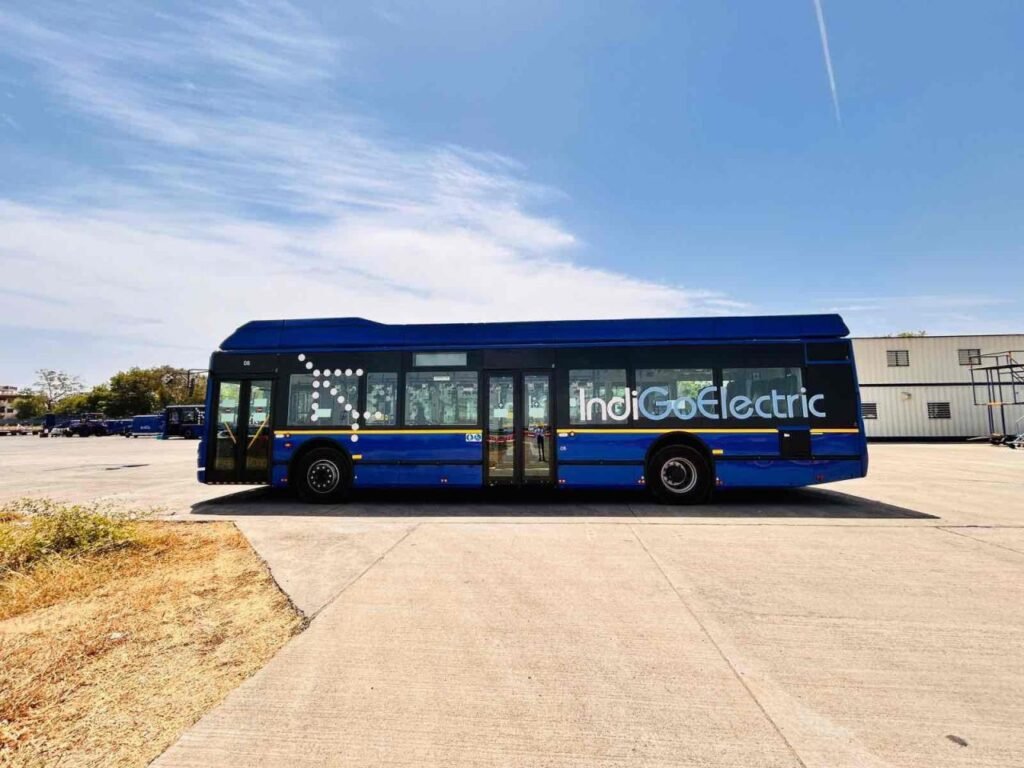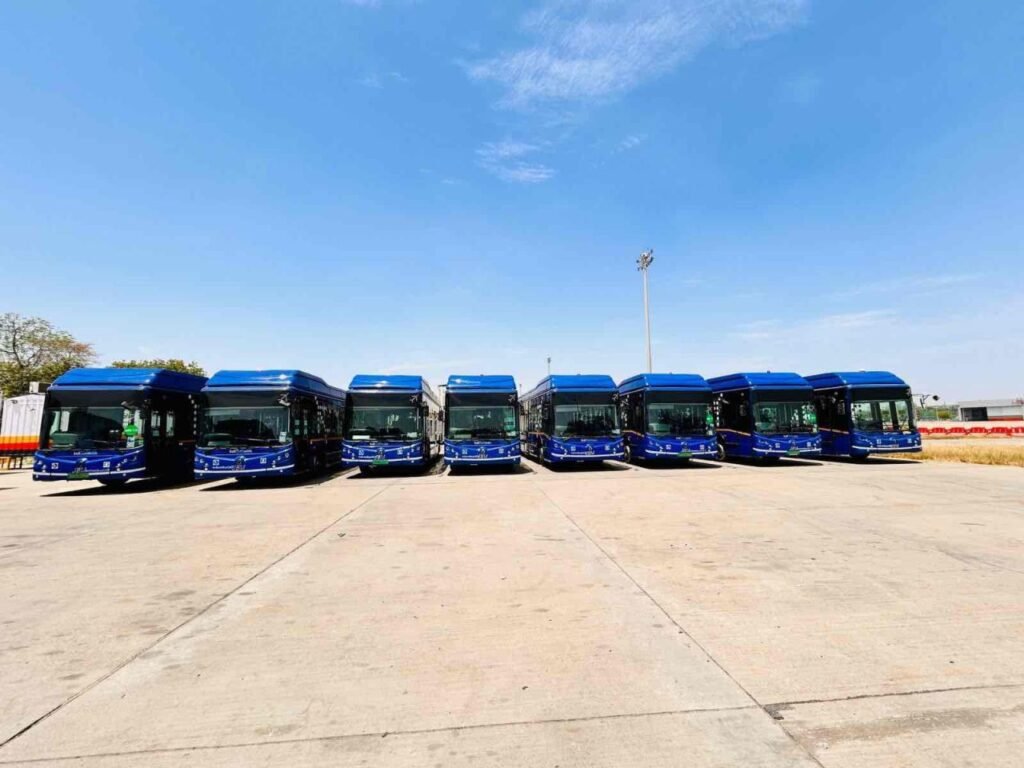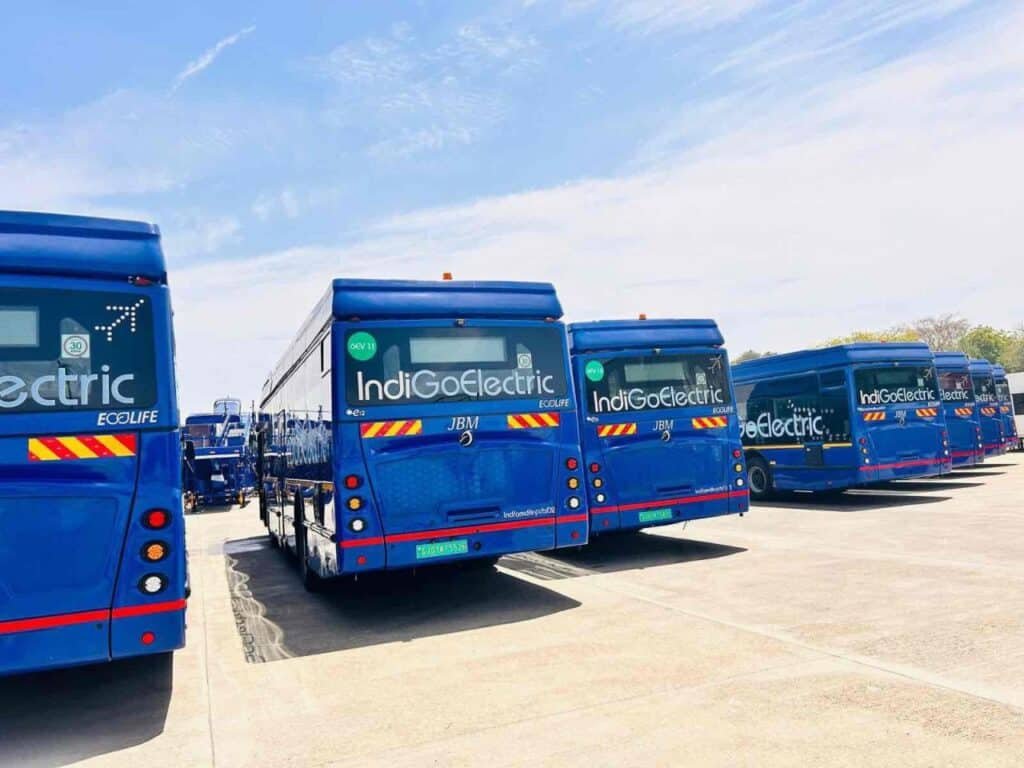- SUMMARY
- IndiGo is now operating 100% Electric Coaches Fleet at Ahmedabad Airport.
- The airline introduced these coaches in India in 2021, with inaugural service from Hyderabad.
- Under various initiatives, the airline ensures to be ahead in the sustainability game than its local peers.
IndiGo, the largest Indian Low Cost Carrier by fleet and market share has achieved yet another milestone. Now, the entire coach fleet of the airline at Ahmedabad Sardar Vallabhbhai Patel International Airport (AMD) has been electrified. IndiGo has phased out the diesel coaches and is now operating a 100% fleet of electric coaches.
IndiGo: Electric Coaches History
If there is an airline, that has always kept itself in front for innovations in sustainability, it is IndiGo. The airline placed a huge order for Electric buses in 2019. JBM Auto, the manufacturer of Electric coaches revealed in the Stock Exchange that three aviation stakeholders ordered around 300 Electric buses. These 3 were the Delhi Integrated Multi-Modal Transit System (DIMTS), SpiceJet, and Interglobe Aviation. Interglobe Aviation is the parent company of IndiGo.

IndiGo uses these electric coaches to carry passengers from the terminal gate to the tarmac and back. They have a capacity of around 50-60 passengers. The airline announced the Entry into service of these buses in 2021. The inaugural deployment was done at Hyderabad Rajiv Gandhi International Airport (HYD). Following this, the airline deployed it at other major airports.
Not just IndiGo, but airlines like SpiceJet are also not behind in the eco-friendly game. In 2020, the airline announced the induction of 25 buses for tarmac usage. Out of this, 15 electric coaches were expected to be deployed at Chennai Airport. SpiceJet was the first Indian airline to deploy Electric coaches at an Indian airport. It deployed another 10 coaches at Ahmedabad Airport in mid-2020.
Other Measures for Sustainability
IndiGo is the largest airline in India in terms of fleet. It is the largest Airbus A321neo across the globe. The majority of its fleet is young and consists of the New Generation jets of Airbus. With time, the airline has retired the older Airbus A320ceo jets. If not for the Pratt & Whitney issues, the whole A320ceo would have been phased by now. The airline is currently grappling with Pratt & Whitney engine contamination, which has prompted it to retain some Airbus A320ceos as well as extend the leases of many Airbus A320neos.

According to Chief Financial Officer, Gaurav Negi, the neo fleet has helped the airline reduce its Carbon emissions by 20 percent. The new CFM LEAP and PW1100 series engines have helped the airline reduce its fuel usage by 15 percent. These new jets are quieter than the older versions.
Like many other global airlines, IndiGo has also focused on the usage of Sustainable Aviation Fuel (SAF). Negi believes that there may be availability issues with the SAF. It had entered into an MoU with the Indian Institute of Petroleum and has collaborated with various Oil companies working on various initiatives. The IndiGoReach campaign runs more than 10,000 biogas units.
Single Engine Taxi
IndiGo encourages its pilots to conduct the flight’s taxi phase with only one engine operating. This helps the airline to save around 3,000 grams of fuel per minute. It declines fuel usage by 20% and carbon emissions by 40%.

The airline also promotes usage of Ground Power Units (GPU), when the aircraft engines are off. In the parked position, since the engines are off, the aircraft has two ways to generate electricity: either via the Auxiliary Power Unit (APU) located in the aircraft tail or the GPU. APU uses more fuel than GPU. For 5 minutes of operations, APU generates 35 kgs of Carbon emissions.
The Electronic Flight Bags (EFB) used by pilots were also brought with an eco-friendly motive. In 2015, IndiGo moved away from paperwork and introduced EFBs in the cockpit for pilots. This move phased out paper charts and manuals and included iPads for gathering all the flight information related to route, weather, etc. From 2015 to October 2023, this EFB initiative has helped the airline cut 2,500 tonnes of carbon emissions.

The airline recently partnered with Altered to fit its entire Airbus fleet with misters. This has resulted in the conservation of water by more than 90%. An airline like Akasa Air goes one step ahead. It has pledged to never use the water salute for any inaugural flight or occasion. Recently, it announced that by doing so, it has saved 3.36 lakh liters of water.
What do you think about such environmental initiatives taken by airlines? What additional can they do? Discuss in the comments section.
With Inputs From IndiGo Twitter, Mobility Outlook
Read the Latest Aviation News on Times of Aviation
Read More: New Port Louis Connection: Air Mauritius Returns to Chennai
Featured Image Credits: IndiGo via Twitter
Website Disclaimer: Times of Aviation does not claim copyright ownership of any information or images used on this website. Usage of content falls under fair use.


